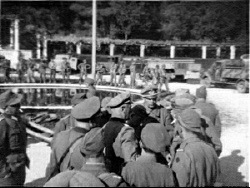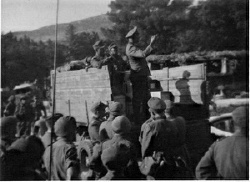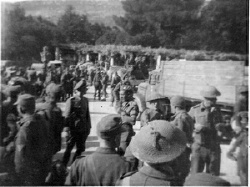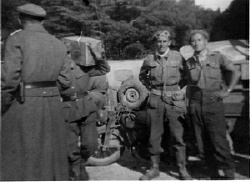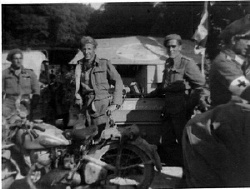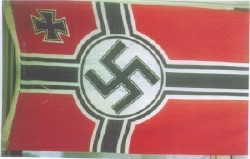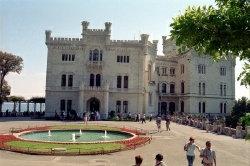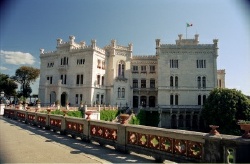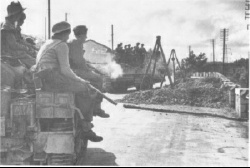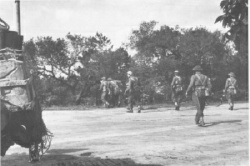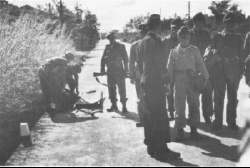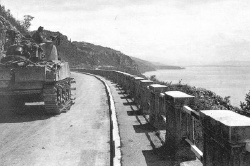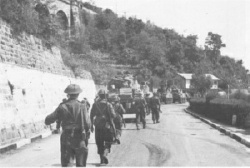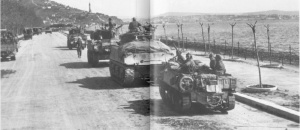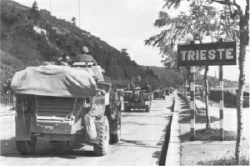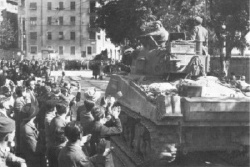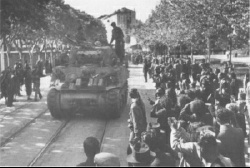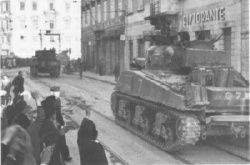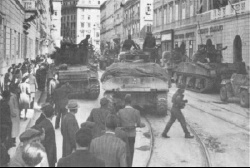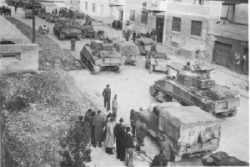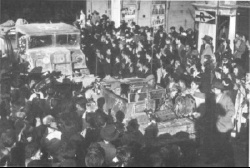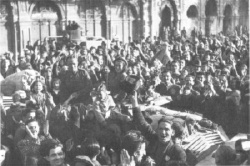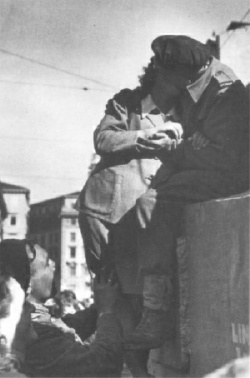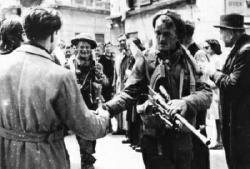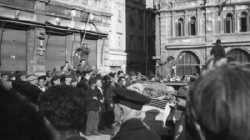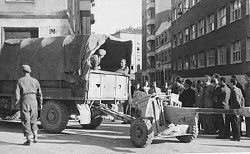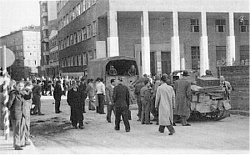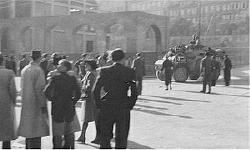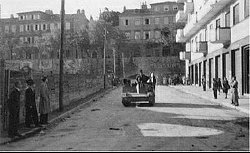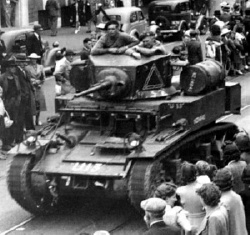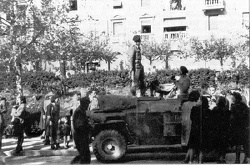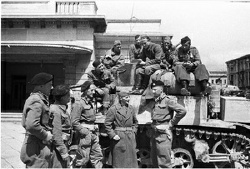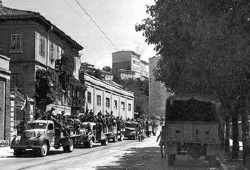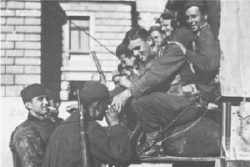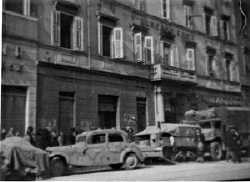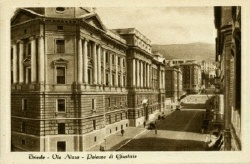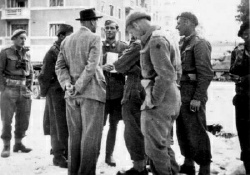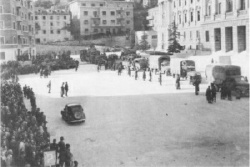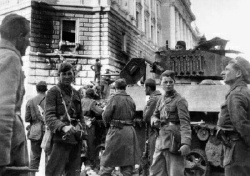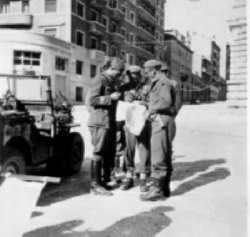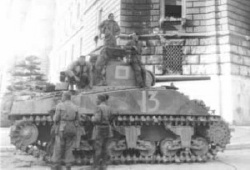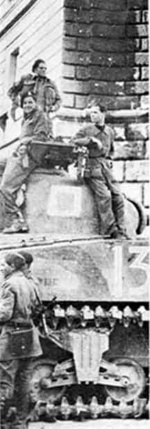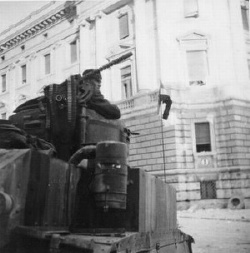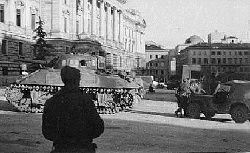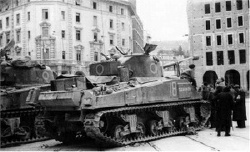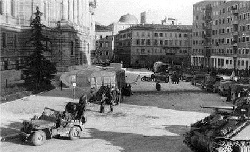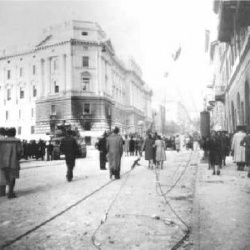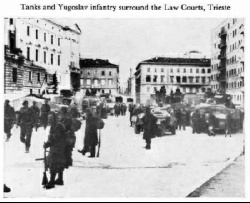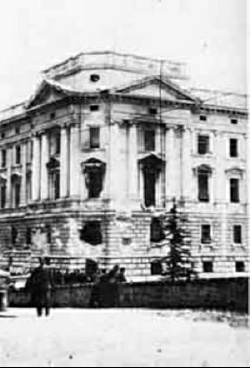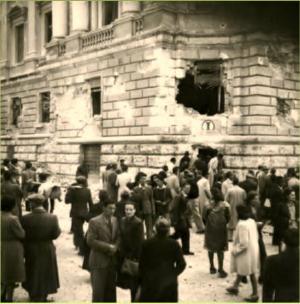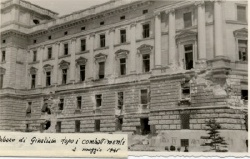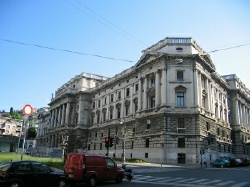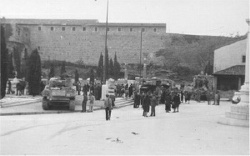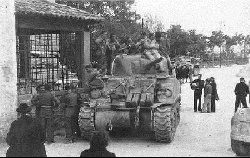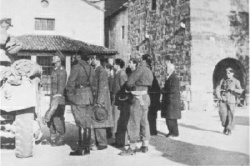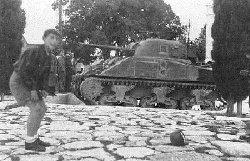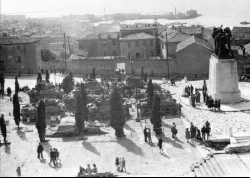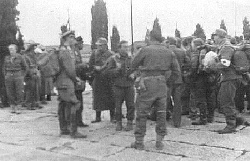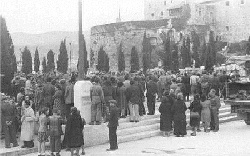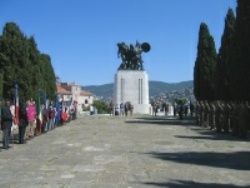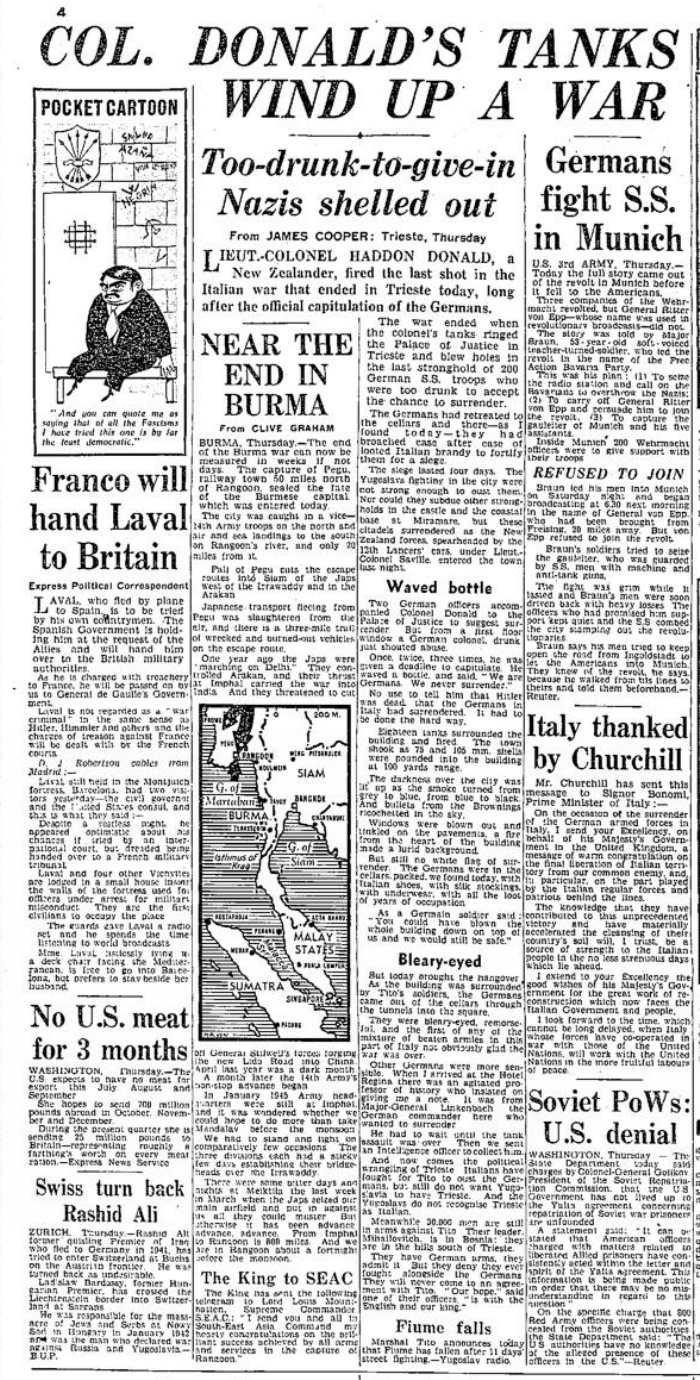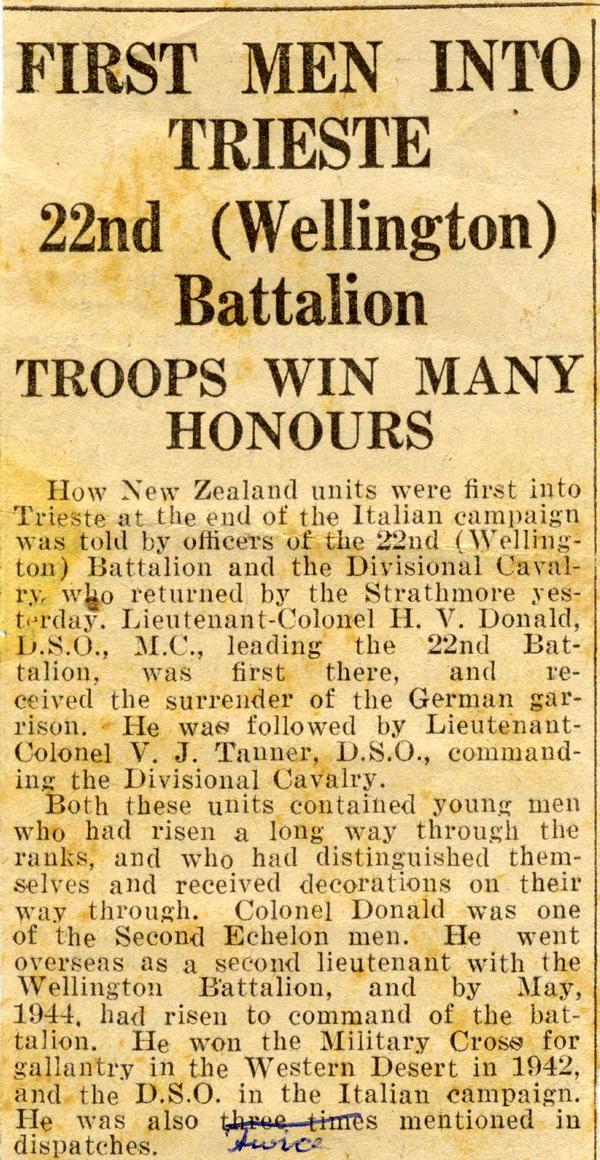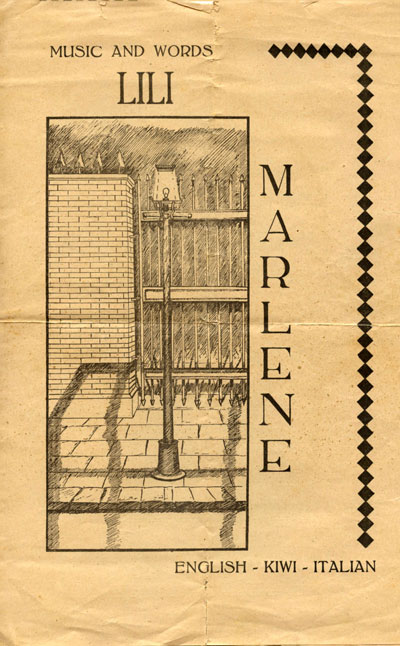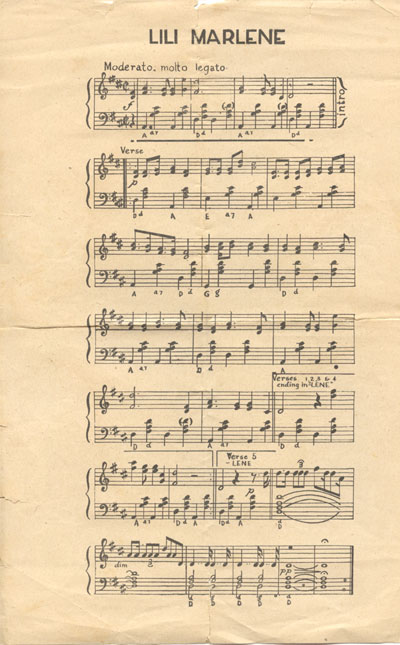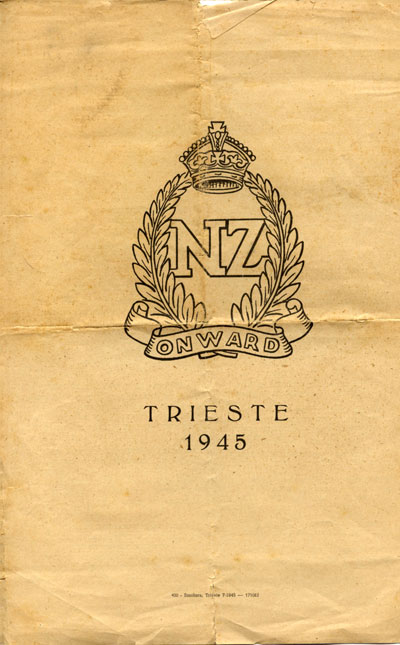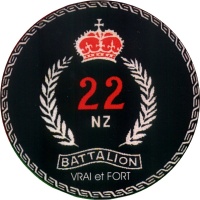
22nd Battalion 2NZEF
"Vrai et Fort"
22 Battalion Enters Trieste
On 2 May 1945 'A' and 'C' Companies of the 22nd Battalion raced northward along the Adriatic Coast towards Trieste. 'B' Company had been left behind
for a few days in Venice. Their mission was two-fold, to
enter Trieste and end the war in Italy, and to get there ahead of other
elements of the 8th Army, in particular Div Cav who were taking the
high road above the town. Despite some reports in the official history
to the contrary, it was 22 Battalion that entered the city first. As
they entered, they found that the Yugoslav partisans had already
arrived, and dealing with them complicated the issues.
The narrative recorded on this website has come from the personal
recollections of those present on the day. The events are
near-identical to the "official" record as written up at the time in
the 22 Battalion War Diary, as filed with Div HQ.
Images of
the War Diary for April and May can be viewed here.
I have located a number of photos taken as the New Zealanders
entered Trieste, and of the incidents that followed. These photos have
mostly come from the
photo-journalism book "Trieste Diary", wriiten and published in Italian
by Sylvia Sprigge. You can view
pages of the book here.
Miramare Castle
Miramare lies on the coast about 5km south of Trieste. It was the HQ for a German Division, but they quietly surrendered to A Company of the 22nd, prompted in part by a severe pounding of the surrounding
air defences by several squadrons of bombers. The large German flag that flew over the castle was removed by A Company, who all signed their names on it. The flag is now on permanent
display in the Waiouru Army Museum.
|
German surrender at Miramare Castle. Capt Jock Wells (with cigarette in mouth) negotiating
|
At Miramare, German officer addressing his troops
|
Miramare. (Malcolm Waller of A Coy, looking to his left)
|
|
Miramare. Motorcycle dispatch rider with goggles
|
Miramare. Dispatch motorcycle, with German medical officer on right
|
The German flag removed by "A" Company, 22 Battalion on 2 May 1945
|
|
Miramare Castle, taken in 2005
|
Miramare Castle, taken in 2005
|
The view from Miramare towards Trieste
|
The road to Trieste
The 22nd Battalion was stopped at a number of points on the road into Trieste, clearing roadblocks and dealing with Germans only some of whom wished to surrender. Eventually LTCOL Haddon Donald was approached by a group of Germans
which included an officer and radio operator. They accompanied Haddon into Trieste, navigating and advising local German units of their arrival.
|
Approaching Sistiana
|
Dealing with roadblocks
|
Guarding prisoners near Trieste
|
|
Haddon Donald seeking directions
|
Haddon's jeep nearing Trieste
|
Trieste in the distance
|
|
Approaching Trieste
|
>Near Trieste
|
The last past of the road
|
Entering Trieste
The 22nd Battalion was accompanied into Trieste by the Lancers and some armour, both under Lt-Col Donald's command. They were welcomed by the Triestini, but the Yugoslav partisans were less
keen, although there are several photos showing the two forces getting on well enough together.
More from Trieste

This photo was captioned as "22nd Battalion guarding German prisoners near Trieste" but in fact it was taken in Cassino. |
|
|
|
|
|
|
The Albergo Roma, home of A Coy
|
The Tribunale Building
For Colonel Donald and the New Zealanders who first arrived in Trieste, the Tribunale (Law Courts) building was occupied by belligerent SS officers who refused to surrender. To quote the
Official History:
|
"At the Tribunale Donald could not persuade the garrison commander to surrender; he was an SS officer who was still humbugging undecidedly and was apparently under the influence of
alcohol. Donald therefore arranged with the Yugoslav commander that tanks of C Squadron of 19 Regiment and C Squadron of the 20th would surround the building and give it a 20-minute pounding with their
guns and Brownings. First the square was cleared of all troops and civilians, and at 7 p.m. 18 tanks at ranges of from 20 to 50 yards blew gaping holes in the walls and through the windows of the Tribunale. The
Germans took shelter in the cellars and had few casualties, but the Yugoslavs entered the building and by morning had rounded up some 200."
|
In his book "In Peace and War", Lt
Col Haddon Donald, commander of the 22 Battalion, recalls:
|
"....I decided to try on my own to persuade them to surrender. With no flag of truce available, I made do with my handkerchief, which was white and reasonably large... I
knew enough Italian and German to be able to explain who I was... and we would give them safe conduct back to a British prisoner of war camp.....They stepped back inside and slammed the door."
"I was fast losing patience with the SS types in the Tribunale, but decided to have one more go at offering them safe conduct.... Terry McLean, my adjutant, could speak some German and by this time an
Austrian civilian had joined us to act as an interpreter. The three of us, under a better constructed white flag marched once more across the Square to parley with the Germans."
"I gave the order to fire and keep firing until we had blown several entries into the building.... The tank boys were having a wonderful time. Never had they had such an easy target and nobody was shooting back at them."
|
The shelling of the Tribunale was one of the few incidents of damage inflicted by the New Zealand troops on arrival at Trieste. A few photographs survive from the event.
|
A postcard of the Tribunale pre-1939.
|
Negotiations - part 1
|
Deciding on the next move.
Left to right: Pete Mitchell (Intelligence officer 22nd Battalion); Yugoslav officer; Italian interpreter; German colonel; Haddon Donald (CO 22nd Battalion); Terry McLean (Adjutant 22nd Battalion);
Hugh Robinson (CO 20th Armoured Regiment)
|
|
Surrounding the building
|
The Yugoslav partisans waiting to enter the building
|
Deciding on another approach - note the larger white flag
|
|
The tanks in waiting
|
The tank boys
|
A Yugoslav tank
|
|
Waiting
|
More tanks
|
Ringing the building
|
|
The aftermath
|
Surrounded
|
The damage
|
|
A photo soon after the event
|
The Tribunale after the shelling
|
The Tribunale
|
Who was the "Austrian" Interpreter?
In several accounts, Col Donald mentioned an "Austrian" interpreter who joined him at the Tribunale Building. The man is not identifed in the War Diary or other records. However, later information, confirmed by Haddon Donald, confirms that this man was
Diego de Henriquez, an Italian of Austrian parentage, living in Trieste.
By way of background: Henriquez (b. 1909) was an eccentric and remarkable figure. In the early 1940s, while serving with the Italian army in Axis-occupied Yugoslavia, he had discovered his mission in life: to collect materials for a Museum of War that would serve both as a historical record and as a warning to humankind against future conflict. As well as a supportive commanding officer, Henriquez had extraordinary communicative skills; he persuaded officers from all the armies in and around Trieste to donate equipment, during the war.
Over the ensuing decades, Henriquez continued to amass material for his putative museum. Despite occasional political support for his vision, it proved impossible to establish a museum during his lifetime. The “Museum of War for Peace” eventually opened in Trieste in 2012, nearly 40 years after Henriquez’s death in 1974.
Along with his vast collection of items relating to military history, the museum possesses Henriquez’s diary, which he kept for decades and of which some 280 volumes survive. The volume that includes May 1945 mentions the surrender of the Wehrmacht garrison in Trieste to 22 Battalion. He was on good terms with the officers, and on 2 May he paid a visit to their HQ in a large villa overlooking the city centre, to say farewell and thank them for their assistance with his collection. That evening, Henriquez received a message that the officers wanted urgently to see him again. He returned at once. Vexingly, at this point the diary breaks off.
Castle San Giusto
Overlooking Trieste and its harbour is the ancient castle of San Giusto, lying next
to the cathedral of San Guisto. The castle housed a German garrison and
as they
occupied a commanding position over the city, Haddon Donald decided
they needed to be removed as soon as possible. He sent C Company, led
by Major Lloyd Cross, up to the castle where they met the CO, an
Admiral. He was willing to surrender but the Yugoslav partisans had
other ideas, threatening to shoot any person, German or Allied, who
left
the building. As Major Cross only had a depleted company, and no tanks
or armour, he decided to stay in the castle until relieved. The Admiral
pointed out that the Kiwis only had a small force whereas the Yugoslavs
had a heavily armoured force. Disretion prevailed, and although the
Germans piled most of their arms into a room, sentries were posted
around the castle that night of Kiwis alternating with Germans - a most
bizarre end to the war. But as Major Cross pointed out to the Admiral,
his troops had not eaten since breakfast and they had not brought
rations with them. The Admiral sat them down to eat with his men. The
menu was stew - made from horsemeat. Major Cross dined with the German
officers, and they had stew - from horsemeat, washed down, not with
Italian wine or good brandy, but Scotch whisky, the last remnants from
the fall of Tobruk.
The official history records the facts:
|
A
company of the 22nd Battalion proceeded to the 750-year-old castle of
San Giusto, the ancient citadel of the port, to receive the surrender
of nine officers and 260 men. In the central courtyard, the company
drew up opposite the paraded garrison, and returned the salute in a
ceremony which had all the appurtenances of a military occasion.
Bullets from Yugoslav snipers pattered against the old walls. As the
prisoners moved out the following day partisans demanded that
the Germans be handed over to them. Tactful handling prevented trouble.
|
Here are some photos of that
time at San Giusto, together with photos I took in 2005. Note the
Cenotaph flanked by yew trees appears in both sets of photos. Some of
the 1945 photos come from this website
|
Monsignor Santin assisting with the German surrender.
|
Looking across the courtyard to the Castle
|
The entrance to the Castle courtyard
|
|
The commander of the German garrison negotiating with the Kiwis
|
A tank on the courtyard
|
Another tank
|
|
Looking down on the assembled tanks on the courtyard. Note the Cenotaph
|
Preparing to depart
|
Looking across to the castle
|
|
The German officers departing
|
The cenotaph today
|
The castle and the Roman ruins
|
|
The view of the port of Trieste from the Castle
|
How the media saw the 2 May 1945
Here is the article from page 4 of the London Daily Telegraph of 4 May 1945. You can also download the whole page as a PDF file here.
When Haddon Donald arrived back in Wellington onboard the troop ship "Strathmore" in late 1945 he was interviewed by the Dominion Post newspaper.
The Final Act - The Cold War Begins with the death of John Russell
After the fall of the Tribunale Building, and the formal surrender of all German forces in Italy to Col Donald, there was still a garrison of German soldiers at the Villa Opicina, overlooking Trieste. The German commander sent a message to Col Donald
that he wished to surrender to the New Zealanders, so Haddon sent part of A Company with some tanks and trucks up to the Villa. Once there they found the place surrounded by Jugoslav forces
who wished to capture the Germans. During the negotiations, the Jugoslavs lobbed a mortar into the town square wounding one Kiwi and killing Lance Corporal John Russell. He became the last
New Zealand casualty of the war, and the first casualty of the Cold War that developed from the standoff between Juoslav and Allied forces in Trieste.
The men of the 22 Battalion were particulary aggrieved at the loss of L/Cpl Russell. It is a lasting testament to their professionalism that they did not return fire.
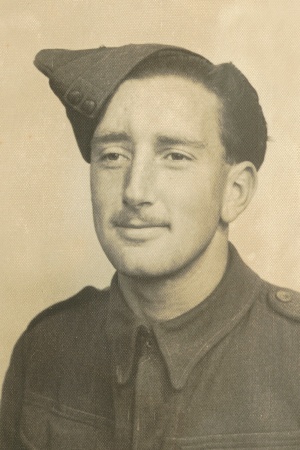 297309 L/Cpl John Norris RUSSELL
297309 L/Cpl John Norris RUSSELL
(Photo from Russell family collection)
|
|
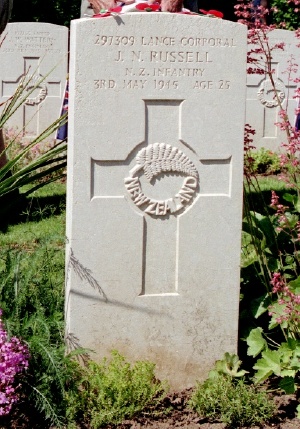 Private Russell's headstone at Udine Cemetery, Italy.
Private Russell's headstone at Udine Cemetery, Italy.
|
|
And after it was all over....
There was time to relax (but not too much with the Jugoslav partisans still causing trouble). There was a famous Ball, held at Miramare Castle, and some new words penned to the tune of Lili Marlene. The
song was published as a broadsheet, and is reproduced below.
Return to Trieste index
Last updated: 3 February 2022
|

